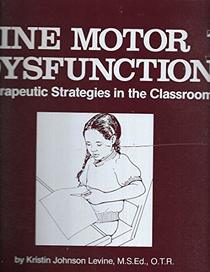Search -
Fine Motor Dysfunction: Therapeutic Strategies in the Classroom
Fine Motor Dysfunction Therapeutic Strategies in the Classroom
Author:
Most teachers have known a student who struggles with fine motor tasks-the second grader who's unable to control the pencil to make legible letters; the kindergartner who cannot copy a square; the third grader who's unable to tie her shoes; or the fifth grader who cannot use a ruler or meet the handwriting challenge. Exacerbating the problem, th... more »
Author:
Most teachers have known a student who struggles with fine motor tasks-the second grader who's unable to control the pencil to make legible letters; the kindergartner who cannot copy a square; the third grader who's unable to tie her shoes; or the fifth grader who cannot use a ruler or meet the handwriting challenge. Exacerbating the problem, th... more »
ISBN-13: 9780761647041
ISBN-10: 076164704X
Pages: 593
Edition: Lslf
Rating: ?
ISBN-10: 076164704X
Pages: 593
Edition: Lslf
Rating: ?
0 stars, based on 0 rating
Publisher: Communication Skill Builders/Therapy Skill Bu
Book Type: Ring-bound
Members Wishing: 1
Reviews: Amazon | Write a Review
Book Type: Ring-bound
Members Wishing: 1
Reviews: Amazon | Write a Review
Genres:
- Health, Fitness & Dieting >> Exercise & Fitness >> Injuries & Rehabilitation
- Nonfiction >> Education >> General
- Nonfiction >> Education >> Special Education >> General
- Nonfiction >> Education >> Special Education >> Learning Disabilities
- Medicine >> Allied Health Professions >> Physical Therapy
- Medical Books >> Allied Health Professions >> Physical Therapy




